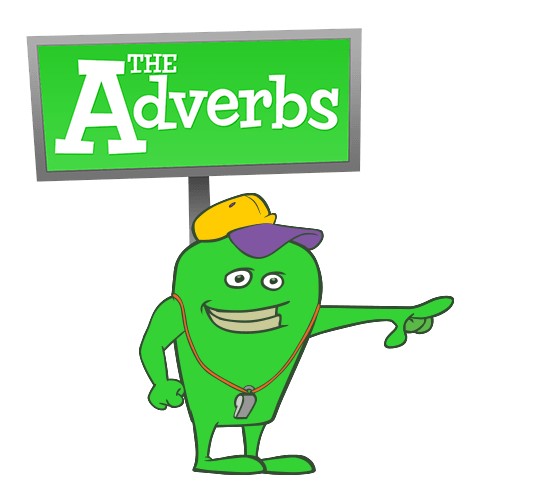
By now, you should know the basic English verb forms, and even some complex structures too.
One of those forms is the present perfect when using adverbs.
Before we begin, let us remember that adverbs have a close relationship with verbs, i.e. they indicate how or how often an action is performed.

One way to learn and become familiar with these crucial aspects of the English is by listening to music. Popular culture is plagued with plenty of useful examples.
Watch the following video so you can better understand how to use the frequency adverbs with the present perfect. How many adverbs and present perfect statements can you identify?
CCRVEVO (2015) Creedence Clearwater Revival - Have You Ever Seen The Rain. [Video file] Consulted on February 9, 2017 in http://bit.ly/1CxGyN4

By the end of this topic you will:
• Exchange Information about habits, past actions, and events which continue in the present, using the adverbs of time and frequency: yet, already, just, recently, lately, ever and never to produce oral and written statements.
The adverbs yet, already, just, recently, lately, ever and never are commonly used in present perfect sentences to express the regularity or continuity of an action or activity.
In Present Perfect you use the following form:
Voilá! A more pertinent and interesting sentence is ready!
But…what does each adverb mean? Where should you place the adverb?
Click on each tab to review the meaning and position of the frequency adverbs in a sentence.
Meaning
Correct position
As mentioned previously, frequency adverbs can be used in affirmative, negative and interrogative sentences. So, we will explore their use in each type of sentence.
Click on each tab to review each example.
Time is crucial to differentiate a situation that is current or continuous or completed.
Let’s take a look at these examples. Click on each tab to review the grammar explanation.
Adverbs of time and frequency are then relevant for accurate and assertive communication. Additionally, adverbs are intensifiers, useful to emphasise the moments of past, present or even a combination of both activities.
Let’s take a look at these examples. Click on each tab to review the explanation.
Now let's do a simple exercise with the adverbs and their time expressions.
Let’s see if you find:
Click here to watch the video.
Fiorela, G. (2009) Across the Universe – I’ve just seen a face. Video with lyrics. [Video file] Consulted on February 9, 2017 in http://bit.ly/2lalGsL
Activity 1
Remember that adverbs can indicate the moment when an action is done or the range of time it has covered so far.
In the next exercise, you will practice the use of adverbs by reading a situation familiar to us all.
Read the article
Signs He Doesn't Like You Through Texting
Lawrence, A. (2016), Signs He Doesn't Like You Through Texting,consulted on October 4th, 2016, at http://bit.ly/2dZPc5d
AAfter reading it, look at the sentences, drag the best option to complete the sentences. You can only do the exercise once. When you finish, check your results.
Remember that the position of a frequency adverb is generally before the main verb in its particple form. Except for yet, lately and sometimes recently, which are located at the end of the sentence.
Here’s a webpage with further information on the adverbs you’ve covered. To practice your reading skills, you can look at the following article and identify the frequency adverbs.
Wait, Have I Been Here Before? The Curious Case of Déjà Vu
Smithsonian.com (2013) Wait, Have I Been Here Before? The Curious Case of Déjà Vu. (Section Science) Consulted on February 9, 2017 in http://bit.ly/1PseFdO
Activity 2
Listen to the following audio, it is a series of questions and answers that exemplify the use of adverbs. You can listen to it as many times as necessary before doing the exercise. When you are ready, write the adverb in the blank of the recording. You can only do the exercise once. When you finish, check your results.
Click here to listen to the audio.
The Lord of the Rings and other experiences
Activity 3
As explored, frequency adverbs are located in a specific place in the sentence.
Read the following sentences and fill in the blanks with the frequency adverbs to complete the sentence correctly. You can only do the exercise once. When you finish, check your results.
Remember that the position of the frequency adverbs is generally before the main verb. Except for yet, lately and sometimes recently, which are located at the end of the sentence.
You can check the examples given in the following web page and compare them with the sentences you've completed.
Present Perfect + Ever, never, already, yet
Education First (s/a) Present Perfect + Ever, never, already, yet (Section English Grammar) Consulted on February 12, 2017 in http://bit.ly/2l1KuSY
Activity 4
Practice your pronunciation using the adverbs yet, already, just, recently, lately, ever and never in sentences about yourself.
Before recording, write in a word document your answers. Now record your speech in the free application vocaroo.com. Once the recording is finished, listen carefully. Please try to stress the adverbs. Do not forget to use as many adverbs as you can, because your grade will depend on that.
You will find a rubrics to self-evaluate your performance in grammar, vocabulary, pronunciation and fluency.
In this lesson and through the learning activities, you have become acquainted with the adverbs, their place in the sentence and their meaning. The following exercise will let you know if you’ve managed to consolidate your knowledge.
You will find a set of questions, each one containing three possible answers. Choose the one that you think is correct. When you finish, based on your assessment you will be provided with the results. You can do the exercise as many times as necessary!
Choose the right option to complete the sentences:
Feel free to review this lesson every time you need it and don’t forget to practice. You can also check this web page:
Ever & Never & Just & Already & Yet
GrammarBank.com (2011) Ever & Never & Just & Already & Yet (Section Grammar) Consulted on February 8, 2017 in http://bit.ly/29UJbjD
Claire, A. y Wilson J.J (2012). Speak Out Pre-Intermediate. Nueva Jersey: Pearson Education.
Oxeden, C., Latham-Koenig, C. y Seligson, P (2008). American English File 2. Londres: Oxford University Press.
http://www.ef.com/english-resources/english-grammar/present-perfect-ever-never-already-yet/
http://www.grammarbank.com/ever-never-just-already-yet.html
iSLCOLLECTIVE.ESL Worksheets. Adverbs of frequency. Retrieved from https://en.islcollective.com/english-esl-worksheets/grammar/adverbs-frequency
EF Education First. Present perfect + ever, never, already, yet. Retrieved from https://www.ef.com/wwen/english-resources/english-grammar/present-perfect-ever-never-already-yet/
Koren Marina (2015). Wait, have I been here before? The curious case of Déjà Vu. Retrieved from https://www.smithsonianmag.com/science-nature/wait-have-i-been-here-before-the-curious-case-of-deja-vu-10948378/?no-ist